Reasons to Visit Dominica, the Caribbean’s ‘Nature Island’
What is Dominica known for?
Located in the Eastern Caribbean sea and known for its dramatic volcanic landscapes, waterfalls, lakes, gorges and hot springs, Dominica is certainly a destination for lovers of nature.
Originally considered a part of the Leeward Islands, Dominica forms part of the Windward Islands group.
The rainforest-clad mountains of Dominica island – the highest mountains in the Eastern Caribbean, arguably make up the most dramatic vistas in the Caribbean, whilst the island is also home to two species of parrot that are native only to Dominica.
Dominica v’s Dominican Republic
Despite the confusion, Dominica and the Dominican Republic are not in fact the same place. The much more touristy Dominican Republic is several hundred miles to the west, however the verdant Caribbean island of Dominica offers incredible natural scenery and warm, welcoming people.
It's little wonder more Britons than ever are being drawn to visit Dominica vs the Dominican Republic for their holidays.
And we have you covered for your Dominica adventure with our travel insurance Caribbean cover.
Here are some of the best reasons to visit...
Dominica has an astonishing landscape
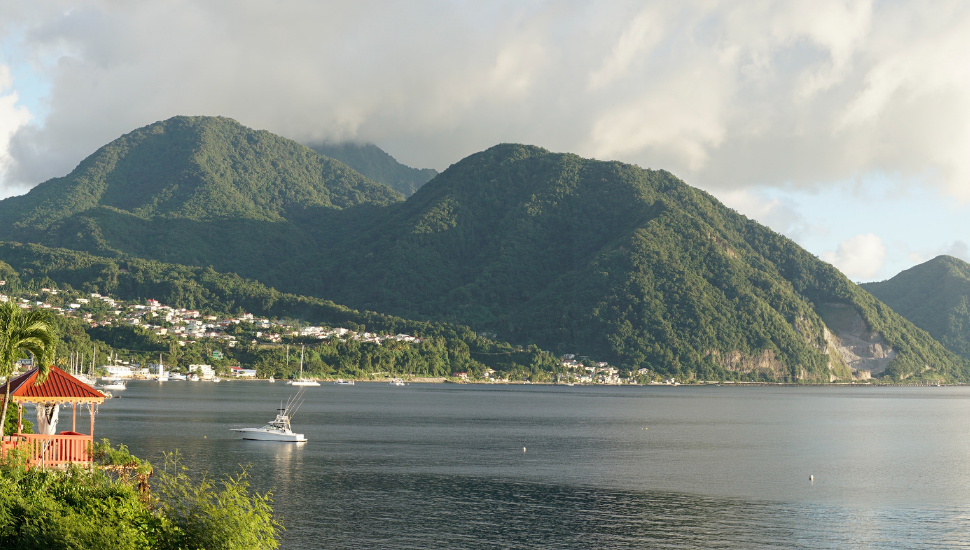
Known as the nature island of the Caribbean, the beautiful island of Dominica, is one of the Caribbean’s best kept secrets.
From land to sea, an experience like no other awaits you on a visit to Dominica.
Giant hulks of tree-carpeted land are virtually untouched by mass tourism, meaning visitors have a real-life Jurassic Park at their feet. Indeed, parts of the dino-classic were filmed here, as well as Pirates of the Caribbean and Dr. No.
Expect volcanoes and sulphurous hot springs like nowhere else on Earth. Indeed, the world's second biggest hot spring - Boiling Lake - is found here.
Places to visit in Dominica
There are some places you just won’t want to miss on your visit to Dominica nature island...
Morne Trois Pitons National Park
A World UNESCO Heritage Site, key attractions within the Morne Trois Pitons National Park include the Valley of Desolation, the Boiling Lake, Titou Gorge, Emerald Pool and Middleham Falls, all individually the best places to visit in Dominica.
Discover brightly coloured hot springs, waterfalls and mini geysers in the moss-covered Valley of Desolation. It is here that you will also find Dominica’s boiling Lake.
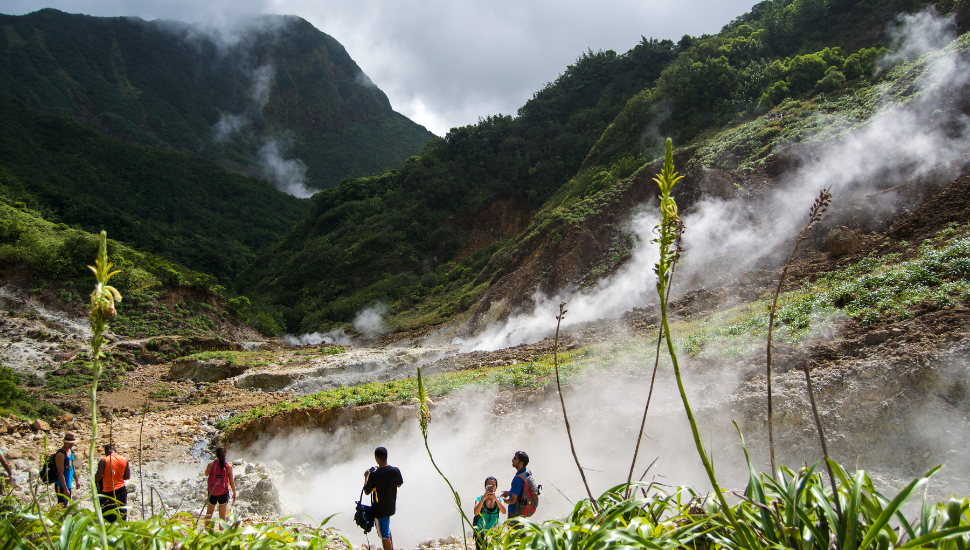
Boiling Lake
This bubbling lake within a volcanic crater, around 76 meters across, is the second-largest hot lake in the world after the Frying Pan Lake, New Zealand.
Titou Gorge
Formed as molten lava cooled and split apart, take a short swim through the narrow gorge to discover a sunlight rock pool and waterfall.
The swim can be cold but the natural hot spring trickling outside is ideal to warm up in.
Titou Gorge, meaning ‘little throat’, was used in the filming of Pirates of the Caribbean, Dead Man's Chest.
Middleham Falls
Hike the Middleham Falls trail though the rainforest, to see the splendour of the falls.
With a narrow stream dropping about 200 ft. from a keyhole notch in the lip of the cliff, water cascades into the pool below, where you can take a swim.
Emerald Pool
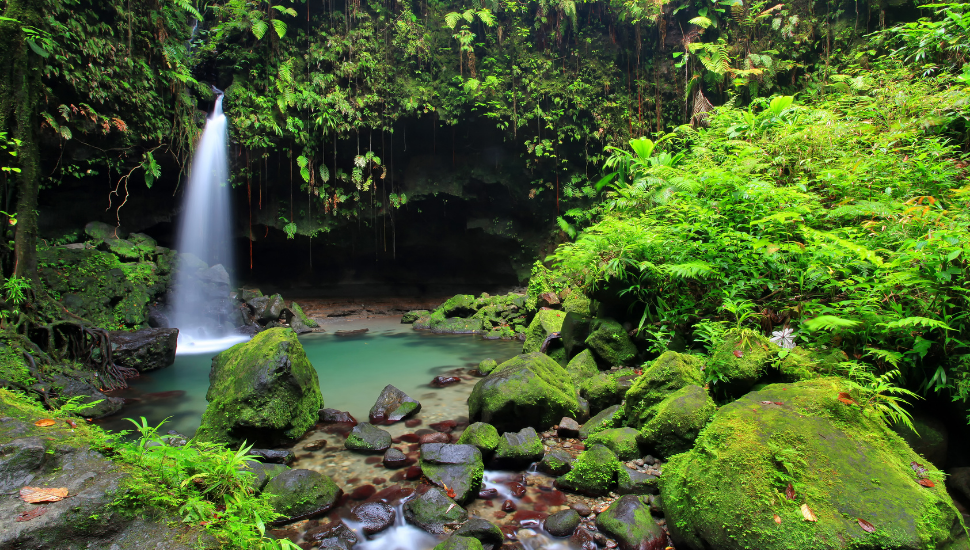
Emerald Pool is not to be missed when traveling to Dominica.
The backdrop of several movies as well as weddings, the Emerald Pool is fed by the clear mountain water rushing from a 40-foot waterfall, whilst the pool’s waters appear emerald green in the leafy, filtered sunlight.
Morne Diablotins National Park
The Morne Diablotins National Park is home to 1,447-meter high Morne Diablotin, the tallest mountain on this Caribbean nature island and the second highest mountain in the Lesser Antilles.
Hike the mountain for spectacular views.
The park is somewhat of a bird watchers paradise, being home to 18 avian species including the endemic Jaco red-necked parrot and blue-headed hummingbird, as well as the endangered Sisserou Parrot, the national symbol of Dominica
Activities to do in Dominica
Whale-watching
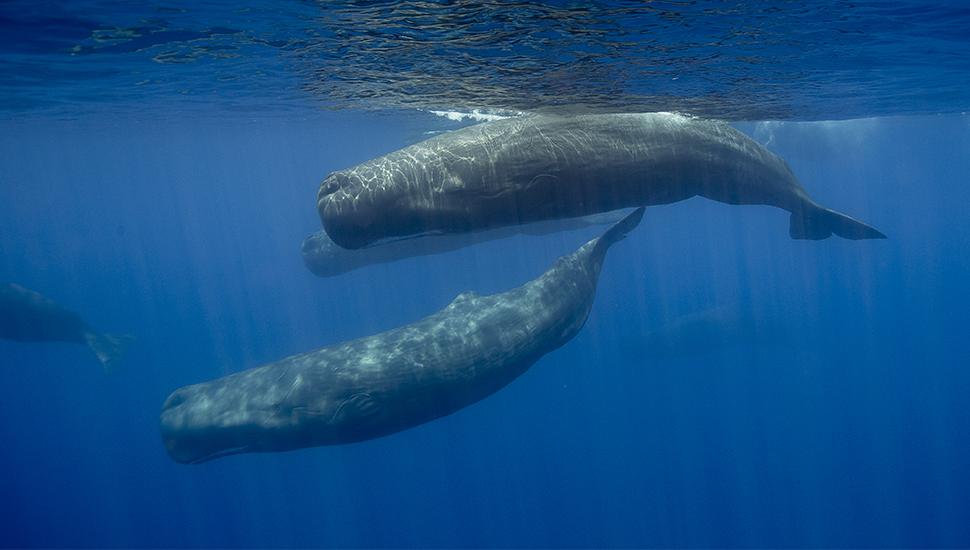
At least 20 species of whales and dolphins - including humpback, sperm and pilot whales can be found in the waters off Dominica.
Indeed, Dominica is the only country in the world where the sperm whale lives all year long, although sightings are most common between November and March.
If you like your aquatic creatures on the large side, then Dominica is for you.
The vertiginous landscape falls away steeply into the ocean, creating a haven for whales and dolphins.
The best locations for whale watching during your visit to Dominica are within five miles of the west coast.
As you would well imagine for an island known as nature island, whale watching operators are required to follow a strict ethical code of conduct.
For any whale watching trip in Dominica, whale watching operators will never entice whales or dolphins to the boats and will give the creatures lots of space.
Scuba diving
Dominica often gets placed in the world's top-10 dive spots, with untouched reefs, sheer walls, and a plethora of colourful sea life.
If you've never dived before, Dominica is one of the best places to learn.
Champagne Reef
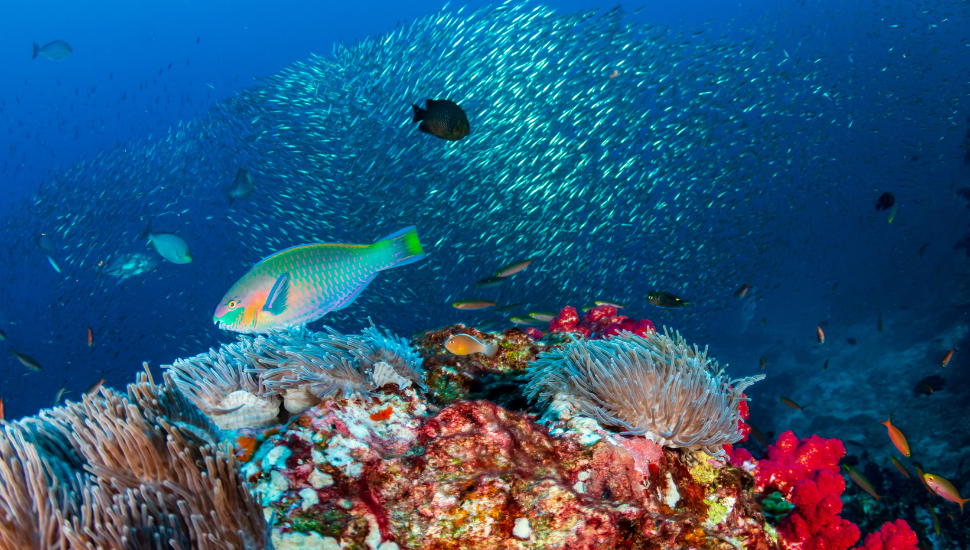
One of the best dive sites in Dominica, Champagne Reef, named so due to the bubbling waters rising from volcanic thermal springs on the ocean floor, attracts divers and snorkelers from across the globe.
Experience a fascinating variety of colourful sponges and crinoids, as well as an extensive variety of undersea creatures — octopus, rays, trumpet fish, parrotfish, batfish, hawksbill turtles, seahorses, sea snakes, and eels.
You may even find the remains of the 17th-century Spanish shipwreck.
Hiking
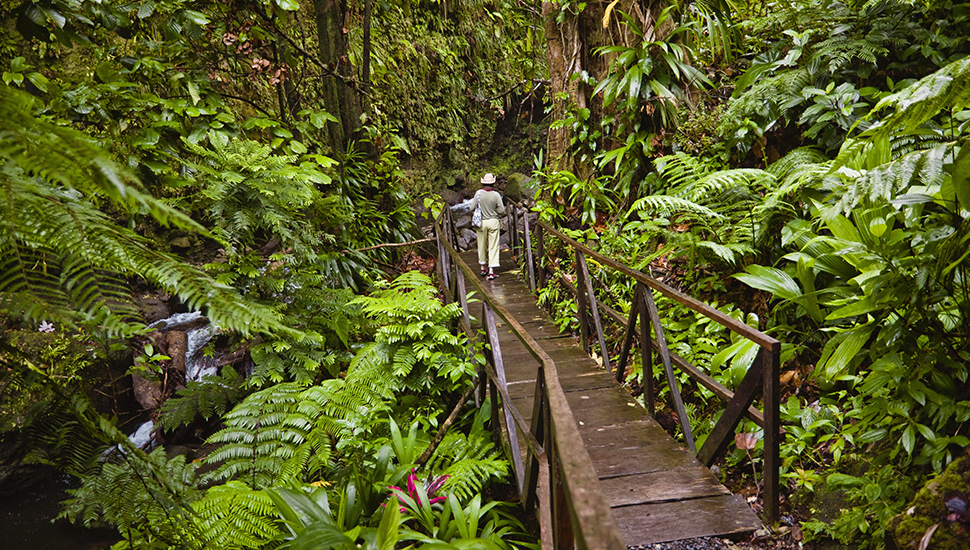
Dominica boasts a hiking trail that stretches across the entire length of the island - the only place in the Caribbean to have such a path.
115 miles long, the Waitukubuli National Trail includes 14 contiguous stretches.
Pencil in at least two weeks if you plan to hike the entire trail, which will bring you into contact with some very remote communities.
Expect to see beautiful waterfalls, rivers, mountains - and lots and lots of thick jungle.
Water activities
Kayak on tranquil mountain lakes, swim in remote river pools, tube down the long rivers on the west coast, or enjoy a spot of reef snorkelling.
If you love being active in the water, Dominica should be placed at the top of your bucket list.
Nature galore can be found in Dominica
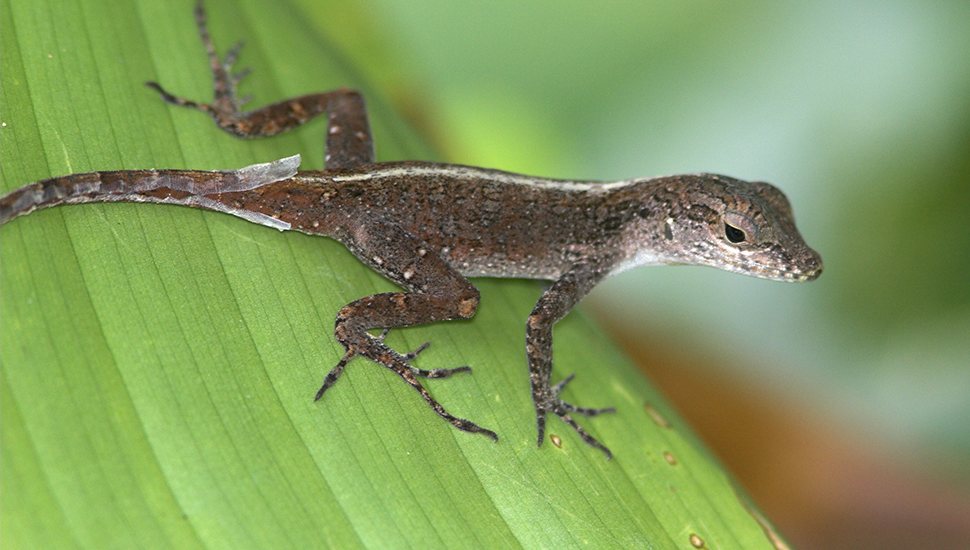
Dominica is home to more than 170 bird species, 1,000 species of flowering plants, 200 kinds of fern and 74 species of orchid.
Exemplifying Dominica's nature-centric credentials, the Sisserou and red-necked Jaco parrot thrive here.
You also have a great chance of seeing the agouti, the manicou, and the crapaud frog.
Creole culture
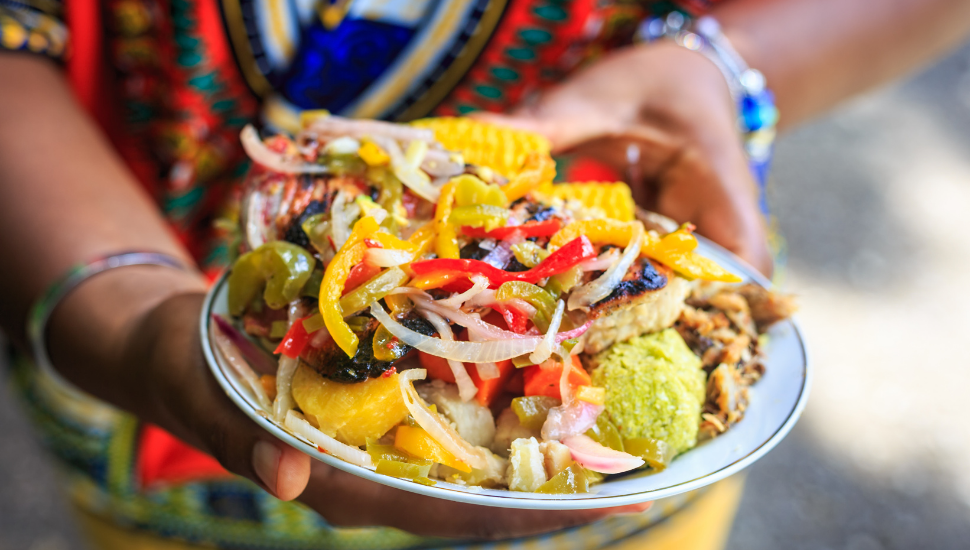
While Dominica was under British control for many years – and as such, English is the official language of the island - Dominica has been heavily influenced by the neighbouring Caribbean Islands of Guadeloupe and Martinique - long administered by France.
The resulting semi-French Creole language and its associated culture, possesses a definite Gallic note.
Creole music is a key part of the culture, highlighted by the annual World Creole Music Festival being held here.
But while the music is amazing, so is the food - largely based around West Indian recipes involving fresh fish, vegetables and fruit, herbs and spices.
Locals like their meals with a moderate dash of heat.
Best time to visit Dominica?
Temperatures in Dominica see little variance, with monthly averages of around 70 and 80 degrees Fahrenheit.
Dominica's rainy season occurs between August and October, during which time the island is susceptible to hurricanes and tropical storms.
Peak hurricane season in Dominica is between late August and early September.
Accommodation options in Dominica?
A variety of accommodation options are available for guests visiting this Caribbean nature island.
Boutique hotels, apartments, guest houses, and cottages; whatever your accommodation preference, you’ll find them here for your stay in Dominica.
For those looking for a luxury holiday stay in Dominica, the 151-room 5 star Cabrits Resort & Spa Kempinski Dominica offers the ultimate in opulence. A week's stay in November in an ocean view pool suite will cost £ 4,007, but if you really want to live the luxury life when you visit Dominica, a 7-night November stay in a Presidential Suite will set you back £47,603.
What currency do they used in Dominica?
In Dominica, the currency is the Eastern Caribbean dollar (EC$).
Other Caribbean Islands that also use the Easter Caribbean dollar include:
- Antigua and Barbuda
- Grenada
- Saint Kitts and Nevis
- Saint Lucia
- Saint Vincent and the Grenadines
- Anguilla
- Montserrat
Travel Insurance for Dominica
For many, a trip to Dominica is a trip of a lifetime, one for which it is important to have appropriate travel insurance in place.
Looking for an annual multi-trip travel insurance policy that will cover Dominica?
At Start Travel, opt for our Worldwide annual multi-trip travel insurance policy including USA, Canada, the Caribbean & Mexico, for your Caribbean travel insurance needs.
We offer 3 levels of travel insurance cover for your worldwide adventures, from 3 star cover, to our best travel insurance for Caribbean holidays – 5 Star cover.
Get a Quote